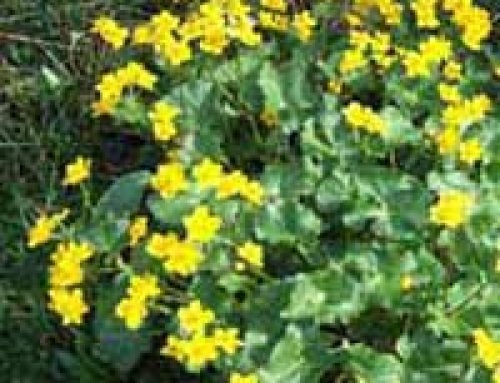 Planting is the key to the whole look and feel of any garden pond. The lush foliage and interestingly shaped leaves of pond plants clothe the shape of the bare water feature itself and link the watery environment with the dry land of the rest of the garden – or at least, that’s the way it’s supposed to be!
Planting is the key to the whole look and feel of any garden pond. The lush foliage and interestingly shaped leaves of pond plants clothe the shape of the bare water feature itself and link the watery environment with the dry land of the rest of the garden – or at least, that’s the way it’s supposed to be!
Getting the planting right – balancing oxygenators, floaters, marginals and deep water plants, producing a striking display to please the eye and complementing the wider garden landscape – can seem a daunting task when faced with the wide array of plants in most garden centres. However, it doesn’t have to be; with a little thought, an effective and impressive pond planting scheme can be surprisingly easy to achieve.
Creating Planting Associations
The trick to planting your pond for maximum impact is to work on developing planting associations – groups of pond plants which harmonise and complement one another to fit in with the overall garden design and emphasise the pond within it.
If you aim to select plants with differing heights, textures, shapes and colours, you won’t go far wrong in terms of the raw material of a planting scheme. The idea is to gather together a range of interesting-looking plants and use them in and around your pond in a way that first draws the eye into the scene and then out of it, to take in the whole of the pond’s setting. It’s a classic approach that has been used by generations of landscape gardeners – and it works!
Planning Your Planting
How you plan your planting regime really depends on personal taste and the space available. As a backdrop in sufficiently large areas, the 6ft (1.8m) wide, broad leaves of Gunnera manicata (Giant or Chilean Rhubarb) are hard to beat. Contrast these with the sword-shaped foliage of Acorus calamus (Sweet Flag) or the rushes of Typha latifolia (Bulrush or Reed Mace) and you’ll be well on the way to providing a really eye-catching setting for your pond.
Where space is more restricted, it’s still possible to get the same kind of effect, though you’ll obviously need to pick smaller plants to use. The likes of Typha minima (Dwarf Bulrush or Dwarf Reed Mace), Cyperus papyrus (Paper Reed) and Scirpus zebrinus (Zebra Rush) – the tallest of which only grows to around 3ft (90cm) – will give your pond planting height, without demanding much spread. Their colours, shapes and forms complement and contrast each other perfectly, making them ideal candidates for a small garden pond.
Another useful tip for getting maximum impact is to select plants for the edge of the pond which act as a natural foil for the plants within it. This needs you to take a careful look at the shape and colours of the pond’s resident oxygenators, floaters, deepwater plants and marginals and then pick bog plants which reflect the general theme you are trying to project. It’s worth taking some time over this; getting a good transition from pond to garden can be a make or break factor in the overall look.
Pond Plants
Planting within the pond obviously has to reflect the needs of the water environment – the choice of oxygenators for instance, being influenced by the type of fish or wildlife for which your pond provides a home. With the rest of the planting, however, aesthetic factors can be given a much freer rein. Water lilies are one of the most enduringly popular type of water plants – and as a way of providing strong impact, they remain hard to beat. However large or small your pond, and wherever it’s located, there’s sure to be a lily to suit – from the tiny Nymphaea pygmaea helvola with its 50-pence sized leaves to dusk flowering beauties like“Missouri” and “Red Flare”.
The oval leaves and small white flowers of Aponogeton distachys (Water Hawthorn) – an attractive aquatic plant, originally from South Africa – make an interesting counterpoint to any water lily, while the native Iris pseudacorus (Yellow Flag) offers an unbeatable above-surface “punch.”
There’s no shortage of suitable aquatic plants to choose from – and even the smallest of garden centres often boasts a surprisingly full range. While picking plants tops the list of enjoyable jobs for most gardeners, it’s well worth taking some time over the selection to make sure you’ll get the biggest impact from your pond.
Last Modified: January 25, 2022








My pond contains koi and grass carp as well as commets – my problem is surface cover/planting – the fish eat everything I have tried planting to date including canadian pondweed, water lillies, water hyacinth, water marigold various grasses and yellow flag. What do you advise please?